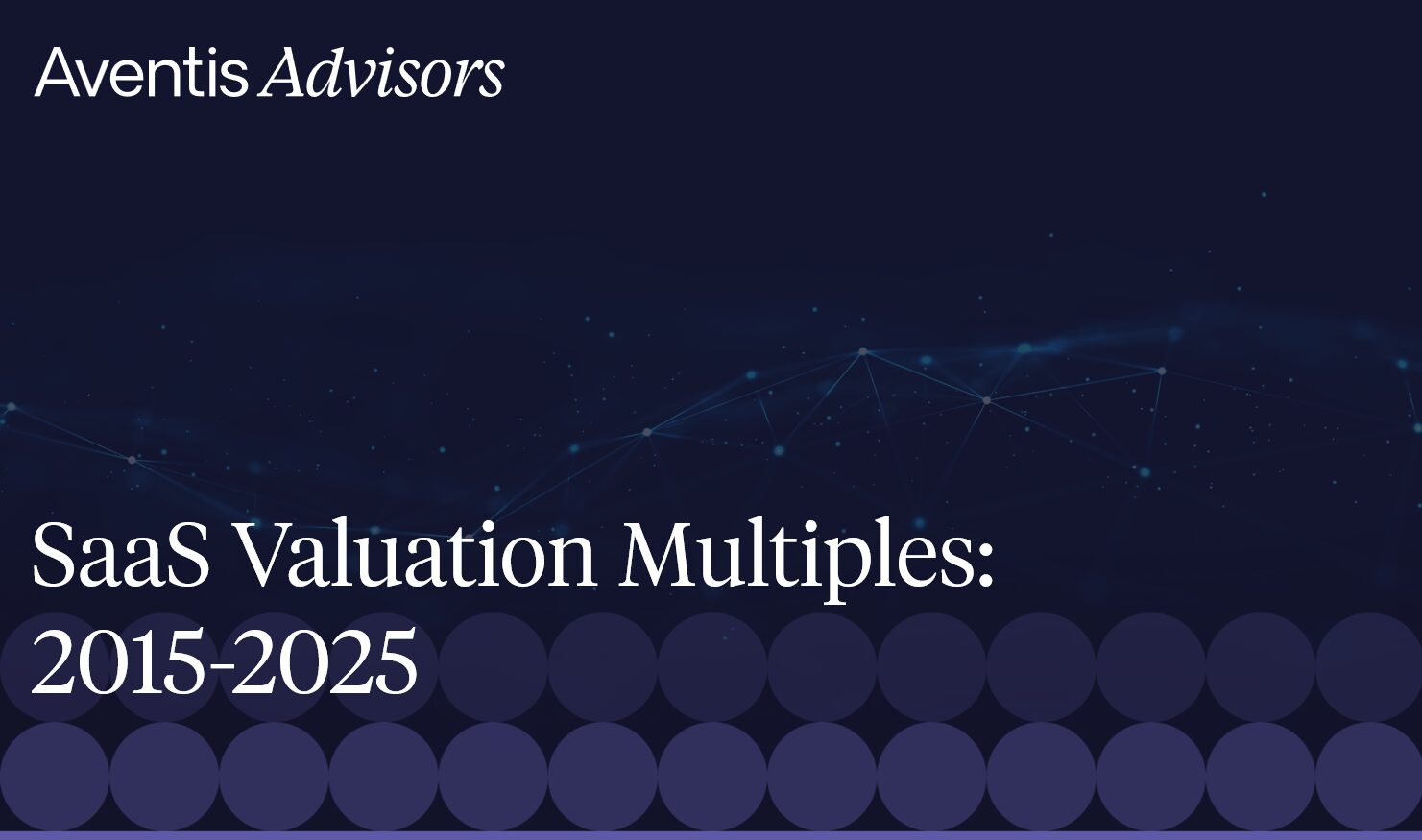In today’s digitally driven world, software is pivotal in shaping businesses, transforming industries, and revolutionizing our lives and work. The software industry has experienced exponential growth, driven by innovation, emerging technologies, and evolving consumer demands. Within this dynamic landscape, mergers and acquisitions (M&A) have emerged as a strategic avenue for companies to strengthen their market position, expand their offerings, and capitalize on the vast potential of the software sector.
This blog post investigates why software players engage in M&A activities. We then explore the software industry’s M&A landscape, offering an in-depth analysis of trends in deal volumes, geographical distribution, valuation multiples, and other essential factors.
Why do software firms engage in M&A
Depending on the buyer, software firms can be acquired for various reasons. The common transactional rationale for acquiring a target company in this industry includes the following:
- Acquire technology, products, and engineering talent to augment capabilities and realize operational synergies once completing post-merger integration.
- Consolidate market position, expand into new markets, and increase customer base by acquiring companies with complementary products.
- Offer a broader range of products and services by acquiring companies in adjacent spaces and obtaining direct access to valuable IP, patented technologies, and copyrights.
- Continue growing rapidly through acquisition rather than just organic growth.
M&A in Software: Overview of the M&A landscape
We analyzed over 39,000 global software mergers and acquisitions deals from 2013 through 1H 2023 to comprehensively understand M&A activity in the industry. Our analysis spans multiple areas, including regional deal volume changes, level of financial vs. strategic acquisitions, median valuation multiples, and more.
While current market conditions may temporarily dampen acquisition activity, ongoing innovation in areas like cloud computing, business intelligence, and advanced analytics suggests that the tech sector will evolve dynamically. As new technologies emerge and enable transformative business models, dealmaking will likely remain vibrant over the long term across the software industry.
Total deal volumes
M&A transactions in the software market grew impressively at a 17.7% CAGR from 2013 to 2021, with deal volumes surging almost four-fold from 1,681 to 6,201. Key growth drivers included accelerating digital transformation, favorable market conditions with abundant capital, increasing financial investor interest, and a general rise in the number of software products, particularly SaaS , hence potential targets.
However, the industry was not completely immune to the global economic slowdown that began in 2022. Facing rising rates, inflation, war in Ukraine, and chip shortages, deal volumes declined 25.5% to 4,618. 2023 began weakly amid tech layoffs, and deals continued falling in Q1 and Q2.
M&A activity by country
Unsurprisingly, the United States recorded the most software mergers and acquisitions between 2013 to 1H 2023, given its dominance as a tech hub and home to major financial investors like venture capital and private equity firms. Total US deal flows reached 17,539, growing steadily yearly until peaking at 2,800 in 2021.
As the largest European economies, the UK, Germany, and France also performed remarkably well, collectively accounting for 53.6% of European software acquisitions. The Nordic countries of Sweden, Finland, Denmark, and Norway saw substantial M&A interest, too, with 1,881 deals in total.
Elsewhere, China, India, Israel, and Japan also stood out for deal volumes, benefiting from cutting-edge technologies and abundant talent pools.
Financial vs. strategic buyers
Acquisitions led by financial buyers like venture capital and private equity firms have risen steadily since 2016, accounting for nearly half of total software deals since 2020. Financial investors have cultivated a strong appetite for acquiring tech and software companies for several key reasons, including:
- High growth potential: software firms can scale rapidly as products are easily reproducible digitally.
- Capital efficient: software companies require relatively low capital expenditure compared to other industries, giving better cash flow and returns on capital.
- Recurring revenues: targets with a software-as-a-service operational model provide predictable, recurring revenues leading to more stable cash flows.
- Ability to bundle and upsell: additional products and features can be bundled and upsold to the existing customer base, enabling growth from existing relationships.
- Potential to disrupt industries: some companies may have the potential to disrupt traditional industries, thus enabling exponential growth opportunities.
Given North America’s position as a leading hub for technology and private capital, it is unsurprising this region saw the highest level of financial acquisitions of software companies. Financial deals peaked at 54.8% in 2022 before declining slightly to 52.3% in the first half of 2023.
Cross-border activity
Cross-border mergers and acquisitions accounted for around 32% of global software deals from 2013 to 2020 until activity surged in 2021 to 37.9% and peaked at 39.9% in 2022. Easy access to capital during this period enabled acquirers to pursue cross-border targets more aggressively. However, as market conditions soured in early 2023 and the tech sector faced significant headwinds, cross-border appetites decreased to 33.2%, in line with pre-pandemic norms.
Interestingly, strategic acquirers have historically been more open to pursuing cross-border deals than financial buyers. From 2013-2020, within strategic acquisitions, cross-border acquisitions accounted for approximately 35% of deals globally, while financial buyers’ cross-border activity hovered around 29%. The exception was in 2021-2022, when favorable market conditions temporarily boosted the international risk appetite among both buyer groups.
Most active buyers
The most active software company acquirers globally represent a mix of strategic players and financial buyers, though U.S.-based entities dominate the top ranks. Insight Partners, a leading venture capital and private equity firm took the top spot with 219 deals over the period analyzed. Norway’s Visma, a software consolidator, came in second with 171 deals. Microsoft followed closely behind with 152 acquisitions aimed at expanding its technology stack.
Regarding median deal value, private equity firms Thoma Bravo and Vista Equity Partners recorded the highest figures. Thoma Bravo made its largest software acquisition in 2022 by acquiring Anaplan for €9.3 billion. Fellow private equity firm Vista Equity Partners, known for aggregating vertical market software companies, acquired tax automation provider Avalara in 2022 for €8.6 billion – its largest software deal with reported value.
M&A in Software: Overview of M&A financials
Median deal value
From 2013 to 2020, the median value for software deals held steady at approximately EUR 13 million. This changed during the pandemic years of 2021-2022, when easy financing conditions and bullish sentiment temporarily pushed median deal values higher. However, median deal size has since moderated back down to historic norms of around €14 million in the first half of 2023. Financial investors’ median deal values largely mirrored the overall trend between 2013 and 1H 2023, staying close to the median for all software acquisitions in most years.
Strategic acquirers consistently executed larger median deal sizes compared to financial buyers over the period analyzed. The gap was significant in certain periods – for example, between 2013-2014, 2021, and 1H 2023. The differences potentially reflect strategic buyers’ willingness to pay higher valuations for deals that can result in significant cost savings or sales growth synergy opportunities.
Median valuation multiples
Both the revenue and EBITDA multiples used in software M&A transactions were relatively stable over the analyzed period. The revenue multiple was hovering in the 3.5x range, and the EBITDA multiple in the 15.0x range until the blockbuster year in 2021. In 2021 valuations spiked to unprecedented heights amid frenzied deal activity and buoyant risk appetite. However, multiples have since pulled back significantly and are now below pre-pandemic levels.
2H 2023 Software M&A Outlook
Anticipated improvements in market sentiment are likely to lead to a moderate increase in software deal flows during the latter half of 2023. However, the considerable reduction in market capitalizations of publicly listed software companies over the past year is projected to keep M&A activities by these companies below historical norms. During the peak of the market bubble, utilizing buyer’s stock as payment was prevalent. Yet, the present scenario has made the issuance of new shares for M&A and persuading sellers to accept share payments more challenging due to heightened uncertainty regarding future performance. Furthermore, strategic investors grapple with challenges stemming from pandemic-induced overinvestment, potentially causing delays in acquisition initiatives.
Simultaneously, private equity investors have amassed substantial capital between 2021 and 2022, which remains uninvested. Certain financial investors are scouting opportunities in the public market (as seen in recent take-privates of Zendesk, Ping Identity, Citrix), while others have their sights set on acquiring private enterprises. We anticipate the continuation of private equity dealmaking, albeit with intensified scrutiny of business models and profitability. With the once-prominent IPO exit route losing some viability, the initial valuation multiples for acquisitions might also undergo changes.
Long-term Software industry M&A outlook
As one technological phase comes to an end, a new one begins. This upcoming cycle will have its own unique story, popular terms, and successful players. A likely driver for this change is the rapid progress of Artificial Intelligence – technologies developed by OpenAI have demonstrated their effectiveness and practicality in everyday applications, potentially giving rise to an entirely new generation of companies based on these and other innovative technologies.
Although it might take quite a while to reach the highest valuations seen in 2021, there will always be a strong interest in new technologies. As a result, the software sector will continue to be one of the most highly regarded and valued areas.
SaaS valuation multiples: 2015-2023
Why You Need a Software M&A Advisor
Monitoring software valuations and M&A activity provides valuable insights into market trends and helps you time your exit strategy effectively. However, every company and founder’s journey is unique, which is why it’s crucial to seek expert guidance from M&A professionals, particularly those specializing in software.
Software M&A advisors have the expertise to navigate market dynamics, assess valuations, and manage all necessary workstreams. While you focus on running your business, they ensure every detail is handled meticulously and work to secure the best possible deal. Their success is tied to yours, and their impact on the final sale price can be significant.
About Aventis Advisors
Aventis Advisors is an M&A advisor for software companies. We believe the world would be better off with fewer (but better quality) M&A deals done at the right moment for the company and its owners. Our goal is to provide honest, insight-driven advice, clearly laying out all the options for our clients – including the one to keep the status quo.
Get in touch with us if you are interested in talking to our M&A advisors about software deal opportunities.




